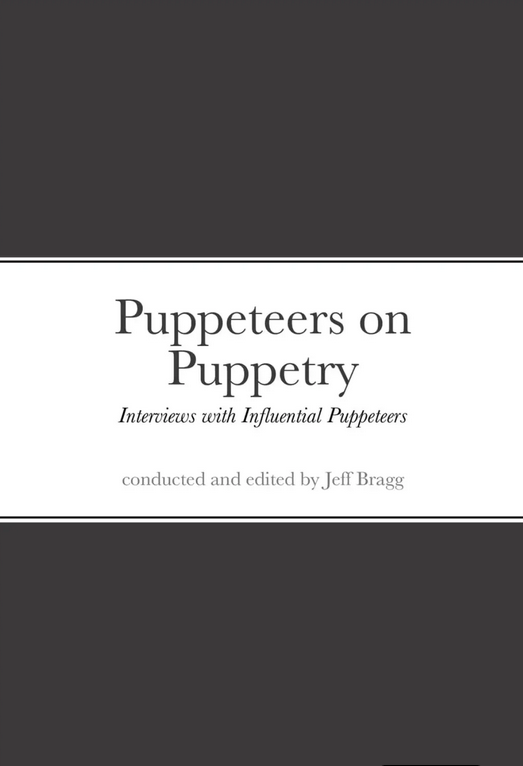SPOTLIGHT: KOREA
SPRING/SUMMER ISSUE NO. 57
Table of Contents • Editorial • Abstracts
Influential Puppeteers
Book Review by Johanna Smith
Jeff Bragg, Puppeteers on Puppetry: Interviews with Influential Puppeteers. Washington, D.C.:Imaginary Ranger Station, 2022. 222 pages. $15.99.
Puppeteers on Puppetry: Interviews with Influential Puppeteers is a charming collection of interviews of American puppeteers conducted and edited by author Jeff Bragg. The interviewees are primarily from the East Coast of the USA, which makes perfect sense as the interviews were originally conducted for the National Capital Puppetry Guild’s newsletter, PuppetTimes, centered in the Washington, D.C. area. As such, they represent a time capsule of stories from a particular time and place that was ripe with innovation and imagination. The interviews are definitely within a specific context that will not be abundantly clear to readers who are unfamiliar with the famous names and careers of certain influential American puppeteers (Bil Baird, Fred Thompson, and on and on), but for an audience of experienced puppeteers, the anecdotes and humor feel like having a chance to sit down and learn from kind and wise mentors.
The interviews follow a similar structure, mainly examining the path of how the puppeteers got started and what led to their successes. Perhaps more interestingly, the interviewees do not shy away from sharing failures and frustrations with good humor. There are several “puppetry specific” threads that unite a lot of the interviews in the collection – such as the willingness to do things without feeling perfectly prepared, the effect of chance meetings with just the right people on career development, the difficulty in being taken seriously as a puppetry artist, and the somewhat chaotic nature of a project-based (often solo) career in the arts. The interviewer’s knowledge of and interest in the interviewees careers is quite evident, and leads to interesting and fruitful advice for others.
As someone who started a career in puppetry at some of the same venerable institutions featured prominently (the Smithsonian’s Discovery Theater for example), I was delighted by the stories of the chaos and luck behind the growth of so many colleagues in the Capital Guild area. Washington, D.C. was the home of Jim Henson, and where he did his early work, and his influence is palpable in the collection. As the reader journeys through the interviews, it feels like a record of how American puppeteers became international in focus with the support of government-funded initiatives and widespread cultural support, thanks to the success and generosity of puppeteers of this time. I was particularly delighted by Bob Brown’s account of being asked to perform puppetry while an active service member with the somewhat problematic support of Bil Baird. It was not long ago that public support for puppetry arts was much more widespread, and these interviews seem to prove the powerful effect of this support on the artists and careers of the time.
The book feels like a primary source, or starting point for conversations and further exploration. The interviews are packed with wisdom and humor, and are very well facilitated by the author. Just make sure to make the effort to look up some of the fascinating people who are mentioned in passing. Personally, I would love to see a second edition with interviews of puppeteers who expand on the foundations of these mentors and reflect the growing scope of our beloved art form in the USA.




